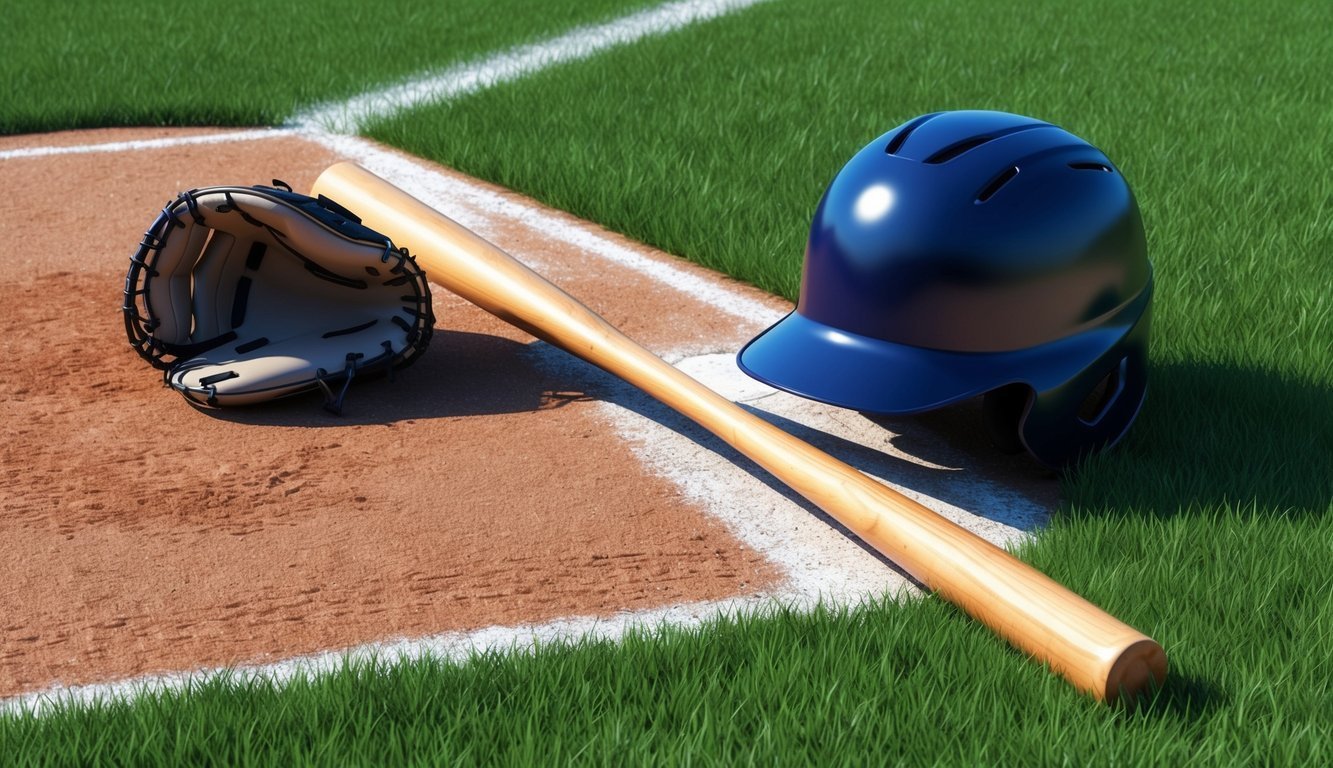Baseball is a game of skill, strategy, and equipment.
From the crack of the bat to the pop of the glove, professional players rely on top-notch gear to perform at their best.
Professional baseball equipment meets the exacting standards of Major League players.
The right equipment can make a significant difference on the field.
Gloves are carefully broken in and customized to each player’s preferences.
Meanwhile, bats are selected based on weight, balance, and material to optimize hitting power and control.
Even seemingly minor details like cleats and batting gloves are chosen with care to enhance performance.
For aspiring players and baseball enthusiasts, using professional-grade equipment offers a chance to experience the game at its highest level.
While talent and practice are crucial, having access to the same gear used by the pros can help players elevate their game and feel more connected to their favorite MLB stars.
Essential Gear for Players
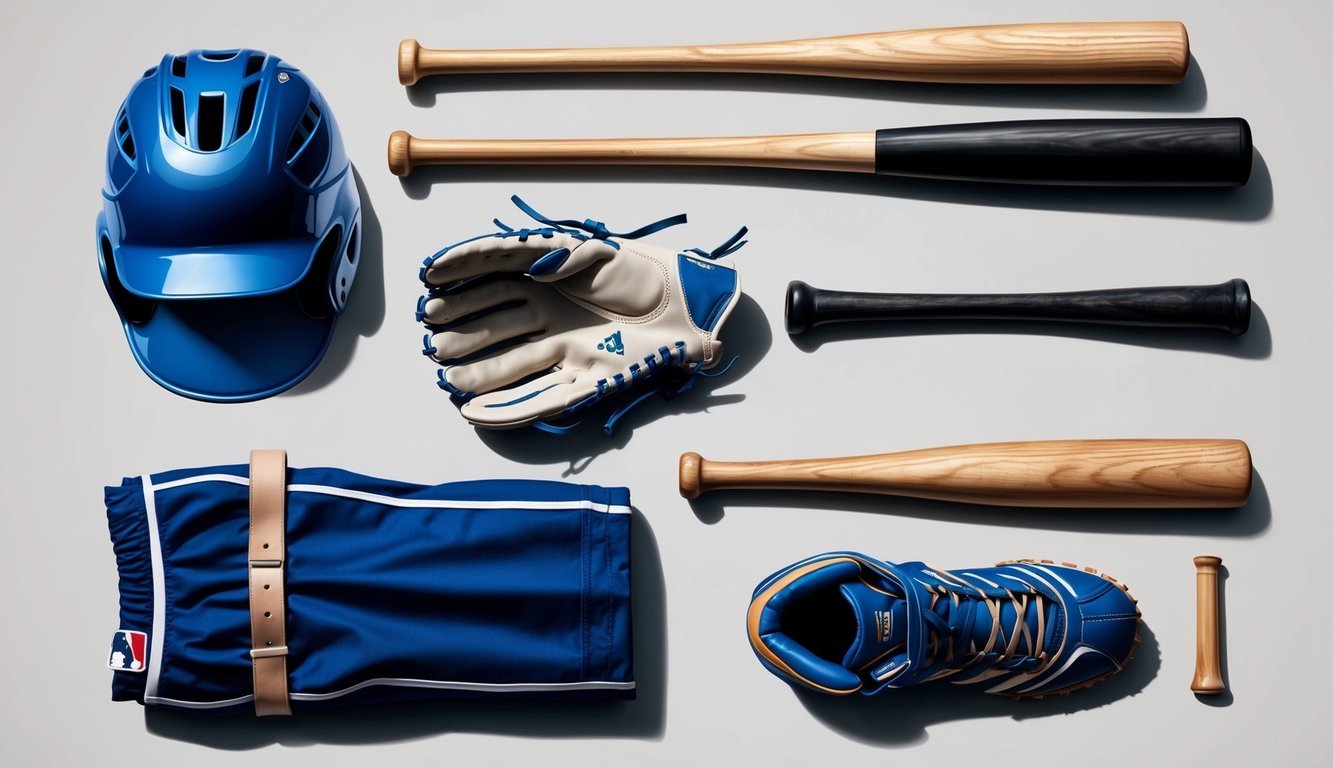
Professional baseball players rely on high-quality equipment to perform at their best.
The right gear enhances performance, provides protection, and helps players excel on the field.
Baseball Bats
Baseball bats are crucial for offensive success.
Players choose bats based on length, weight, and material.
Wood bats, often made from maple or ash, are required in professional leagues.
Meanwhile, metal bats, typically aluminum or composite, are common in amateur play.
Bat length usually ranges from 31 to 34 inches, with weight varying between 28 and 32 ounces.
The right combination depends on a player’s strength, size, and hitting style.
Many pros use customized bats with specific barrel sizes and handle thicknesses.
Some popular brands include Louisville Slugger, Marucci, and Victus.
Gloves and Mitts
A well-fitted glove is essential for fielding.
Different positions require specialized gloves:
- Infielders: Smaller gloves (11-12 inches) for quick transfers
- Outfielders: Larger gloves (12-13 inches) with deep pockets
- First basemen: Longer mitts (12-13 inches) for scooping throws
- Catchers: Heavy-duty mitts with extra padding
Top glove manufacturers include Rawlings, Wilson, and Mizuno.
Many players prefer leather gloves for durability and feel.
Breaking in a new glove is crucial for optimal performance.
Protective Equipment
Safety is paramount in baseball.
Key protective gear includes:
- Batting helmets: Protect against pitched balls
- Shin guards: Shield legs while batting
- Elbow guards: Protect from hit-by-pitch injuries
- Sliding shorts: Padded compression shorts for base running
- Athletic cups: Essential protection for male players
Catchers require additional gear:
- Mask
- Chest protector
- Shin guards
- Throat guard
Many players also use batting gloves to improve grip and reduce vibration.
Meanwhile, cleats with metal or molded spikes provide traction on various field surfaces.
Training and Practice Equipment
Baseball players rely on specialized gear to hone their skills.
These tools help improve batting, fielding, and pitching techniques through repetitive practice and targeted drills.
As players continually seek to enhance their performance, the evolution of baseball equipment has played a crucial role in training methodologies.
Modern bats, gloves, and cleats are designed with cutting-edge materials that enhance grip, durability, and swing speed, providing athletes with a competitive edge.
Additionally, advancements in technology have led to the development of video analysis tools that help players refine their techniques using real-time feedback during both practice and games.
Batting Tees
Batting tees are essential for developing a consistent swing.
They allow hitters to focus on proper mechanics without the pressure of a moving pitch.
Adjustable tees accommodate players of different heights and can be set to various positions in the strike zone.
Some tees feature weighted bases for stability, while others have flexible stems that simulate ball contact.
Advanced models may include multiple tee positions for practicing inside and outside pitches.
Portable tees are popular for home use and team practices.
Durable construction is key, as tees endure repeated impacts from bats.
Practice Balls
Practice balls come in various types to suit different training needs.
Wiffle balls are lightweight and perforated, ideal for indoor batting practice or backyard games.
They reduce the risk of property damage and injury.
Heavy training balls help build arm strength for pitchers and fielders.
Meanwhile, soft compression balls are safer for younger players and indoor use.
Dimpled balls mimic the flight characteristics of regulation baseballs but travel shorter distances.
Some practice balls feature visual cues or markings to help pitchers with grip and release points.
On the other hand, foam balls are useful for fielding drills, as they bounce realistically but won’t harm players.
Fielding Trainers
Fielding trainers enhance defensive skills through targeted practice.
Bounce-back nets allow players to practice ground balls and line drives solo.
These nets return the ball at various angles, simulating different types of hits.
Glove targets improve catching accuracy by providing a specific aim point.
Some feature removable inserts to adjust the difficulty level.
Meanwhile, reaction balls have irregular shapes that create unpredictable bounces, sharpening players’ reflexes and hand-eye coordination.
Agility ladders and cones help fielders improve footwork and lateral movement.
Pop-up machines simulate fly balls for outfield practice, allowing players to work on judging and tracking high hits.
Apparel and Footwear
Professional baseball players rely on specialized clothing and footwear to perform at their best.
These items combine comfort, functionality, and style to meet the demands of the sport.
Performance Clothing
Baseball uniforms have come a long way, now incorporating advanced materials for enhanced comfort and performance.
Moisture-wicking fabrics help keep players cool and dry during intense games.
Meanwhile, stretchy, breathable materials allow for a full range of motion when batting, fielding, or running bases.
Many brands like Under Armour offer compression gear designed to support muscles and improve blood flow.
This can potentially reduce fatigue and aid in recovery.
Protective gear is also crucial.
Sliding shorts with padding protect players when stealing bases or diving for catches.
On the other hand, catchers wear extra padding and protective gear to handle high-speed pitches.
Some players opt for UV-protective arm sleeves to shield against sun exposure during day games.
Meanwhile, sunglasses with shatterproof lenses are popular for outfielders to combat glare.
Baseball Cleats
Baseball cleats are a vital part of a player’s gear, providing traction and stability on various field surfaces.
Modern cleats are lightweight yet durable, designed for quick movements and sudden stops.
Metal cleats offer superior grip on grass and dirt but are often restricted in youth leagues.
Meanwhile, molded plastic cleats are versatile and allowed at all levels of play.
Some players prefer interchangeable cleats for adaptability to different field conditions.
High-top cleats provide extra ankle support, while low-top styles offer more flexibility.
Many cleats feature cushioned insoles and shock-absorbing midsoles for comfort during long games.
Brands constantly innovate, incorporating new materials and technologies.
Some cleats now include customizable spike configurations or specialized traction patterns for different positions on the field.
Accessories for Comfort and Flair
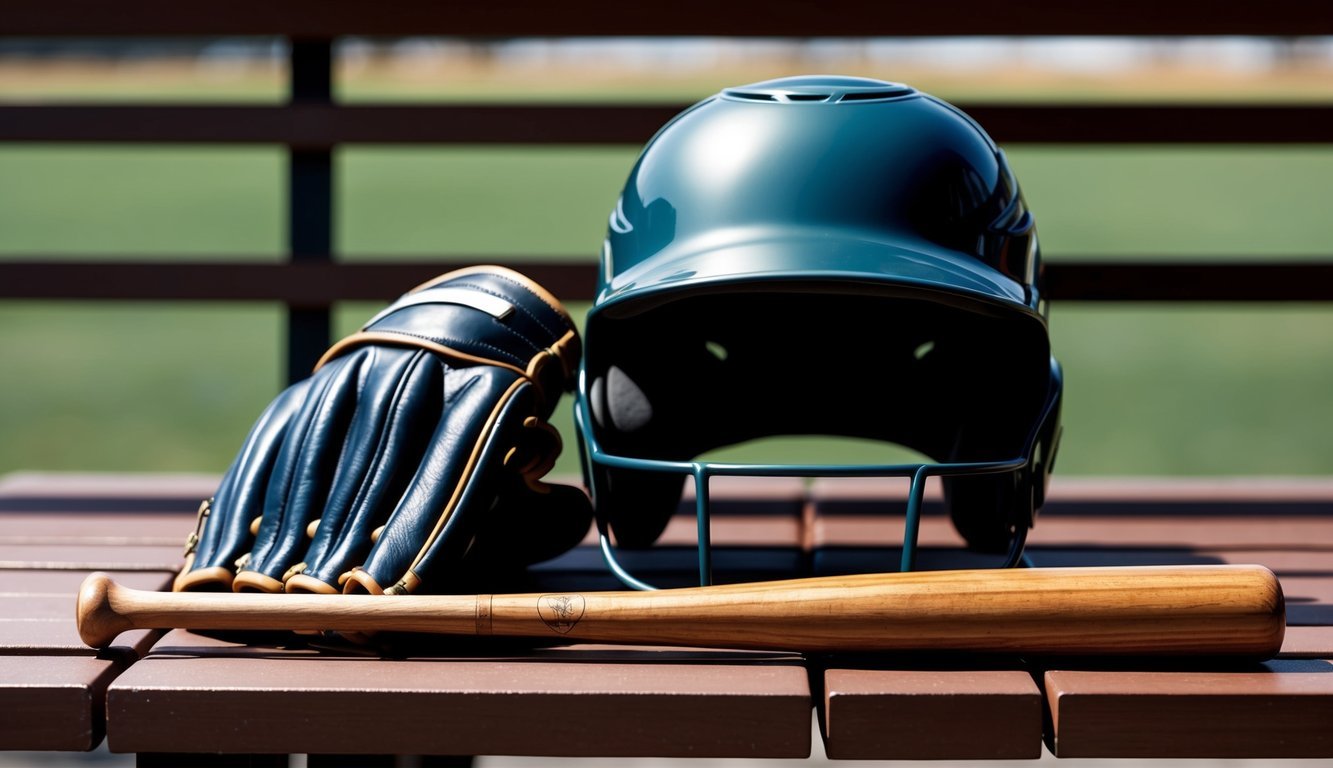
Baseball players often seek accessories that blend functionality with style.
These items enhance performance while adding a personal touch to their on-field appearance.
Sunglasses and Eyewear
Protective eyewear is crucial for baseball players.
High-quality sunglasses shield eyes from harmful UV rays and reduce glare from the sun or stadium lights.
Polarized lenses offer superior clarity and contrast, helping players track fly balls more easily.
Many brands design sports-specific sunglasses with lightweight, shatterproof materials.
These frames often feature rubber nose pads and temple grips to prevent slipping during intense gameplay.
Some popular styles include wraparound designs for maximum coverage and interchangeable lenses to adapt to different light conditions.
Players can choose from a variety of lens tints.
Gray lenses maintain true color perception, while amber or brown tints enhance contrast against blue or green backgrounds.
Batting Gloves
Batting gloves provide grip, comfort, and style at the plate.
They protect hands from blisters and vibrations caused by contact with the bat.
Modern gloves use moisture-wicking materials to keep hands dry during hot games.
Leather palms offer durability and tactile feedback, while synthetic materials provide flexibility.
Meanwhile, many gloves feature perforated panels for breathability.
Players can choose from various colors and designs to match their team uniforms or express personal flair.
Some batting gloves incorporate padding in key areas to reduce sting from mishits.
Others use compression technology to improve blood flow and reduce hand fatigue during long games or practice sessions.
Bags and Storage
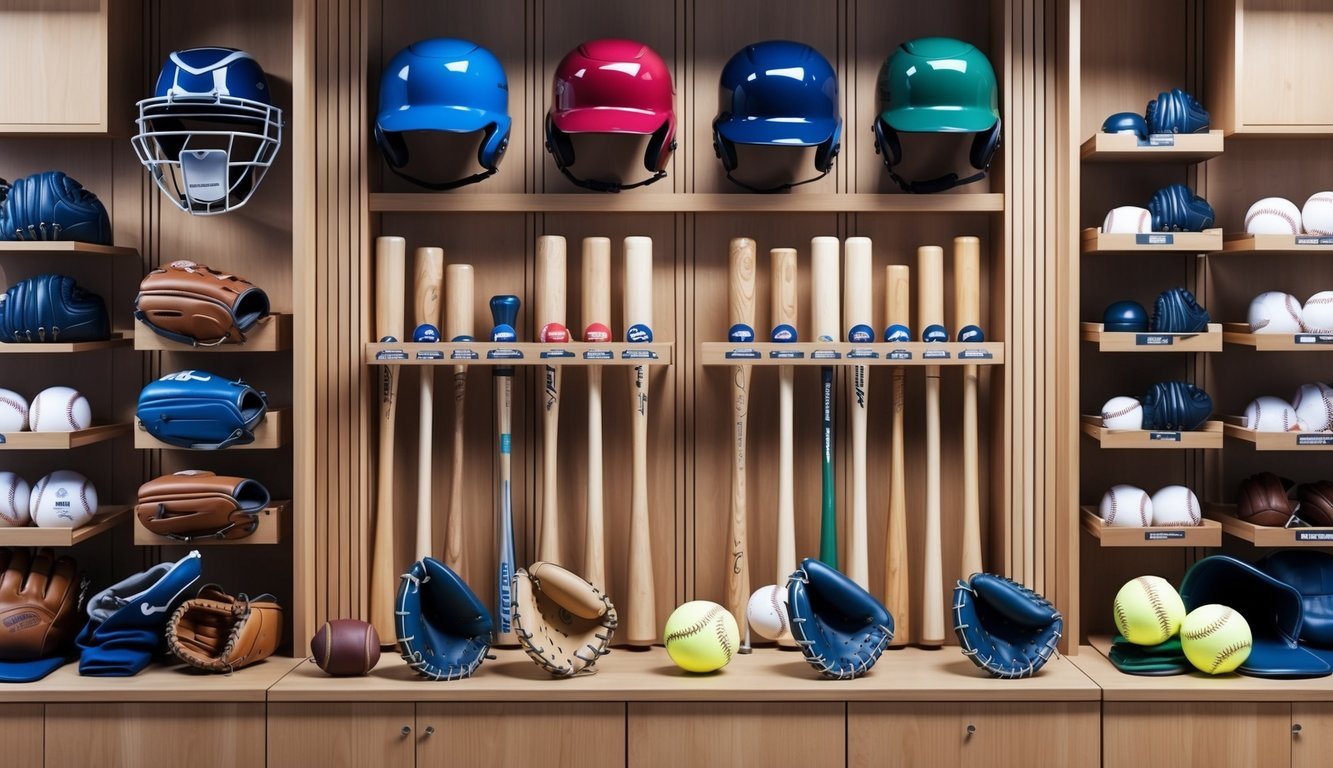
Baseball players need sturdy bags to transport their gear.
Wheeled bat bags have become popular for their convenience and capacity.
These bags often feature separate compartments for bats, gloves, cleats, and personal items.
Backpack-style bags offer a more compact option for players who prefer to travel light.
Many models include dedicated slots for bats and helmets, plus organizational pockets for smaller accessories.
Some bags come with built-in fence hooks, allowing players to hang them in the dugout for easy access.
Water-resistant materials and reinforced bottoms help protect equipment from the elements and wear.
How to Choose and Care for Your Equipment
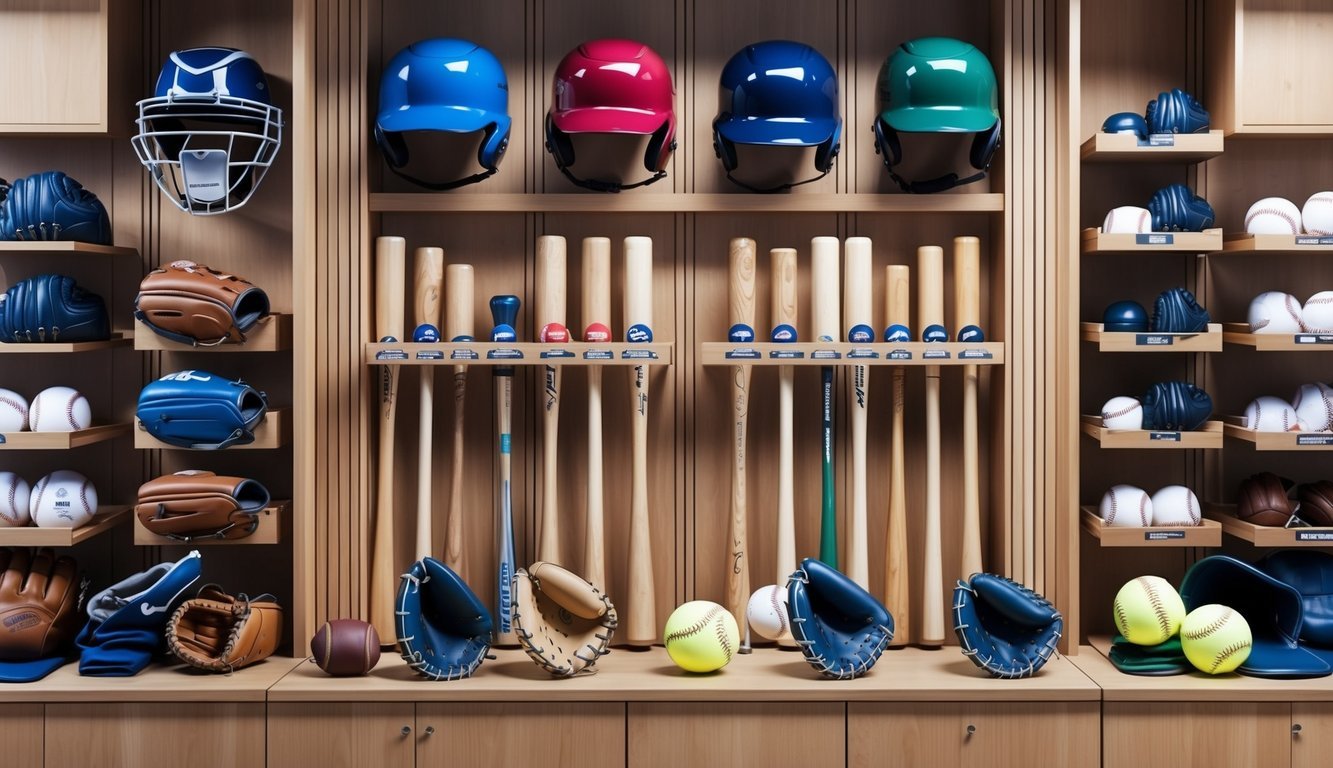
Selecting and maintaining the right baseball gear is crucial for performance and longevity.
Proper care ensures your equipment stays in top condition, allowing you to focus on the game.
Selecting the Right Gear
When shopping for baseball equipment, prioritize fit and quality.
Bats should feel comfortable in your hands and match your strength and skill level.
Gloves need to fit snugly, with the right pocket size for your position.
Meanwhile, choose cleats that provide good traction and support.
Try on helmets to ensure a secure fit that protects your head without obstructing vision.
For catchers, invest in high-quality protective gear that offers both safety and mobility.
Consider your playing style and frequency when selecting gear.
Higher-end equipment may be worth the investment for serious players, while recreational players can often find quality options at more affordable price points.
Maintenance and Storage
Regular cleaning and proper storage extend the life of your baseball equipment.
After each use, wipe down bats with a damp cloth to remove dirt and maintain grip.
Periodically oil gloves to keep the leather supple and prevent cracking.
Clean helmets with mild soap and water, avoiding harsh chemicals that could degrade the protective materials.
Wash uniforms in cold water and air dry to prevent shrinkage and maintain color.
Store gear in a cool, dry place away from direct sunlight.
Use bat bags to protect bats during transport.
Stuff gloves with newspaper to maintain shape when not in use.
In rainy conditions, dry equipment thoroughly before storage to prevent mold and mildew.
Replace worn-out gear promptly to ensure safety and optimal performance on the field.
